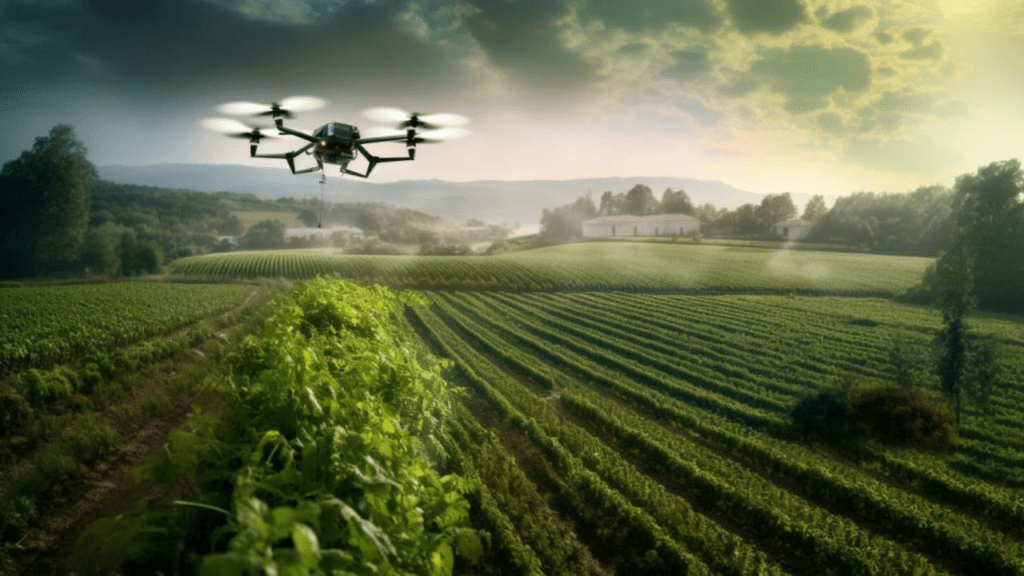Photo was created by Webthat using MidJourney
Introducing Chirrup: AI System Identifies Bird Species to Monitor Wildlife
In the quest for sustainable agriculture, farmers are turning to artificial intelligence (AI) to monitor wildlife on their land. Chirrup, developed by Conrad Young in Cheltenham, is an innovative AI system that can identify individual bird species by analyzing recordings of the dawn chorus.
By harnessing the power of AI, farmers gain valuable insights into the biodiversity levels on their farms, paving the way for informed conservation efforts and sustainable farming practices.
Building a Detailed Picture: Logging Bird Recordings for Biodiversity Assessment
Chirrup goes beyond simple bird identification—it is designed to log and analyze recordings over time, allowing farmers to build a comprehensive picture of the bird population on their land. As more sounds are recorded and analyzed, Chirrup’s database grows, providing a wealth of data that can aid in assessing the levels of biodiversity.
This information becomes a valuable resource for farmers, conservationists, and researchers, contributing to a deeper understanding of the ecological health of farmland ecosystems.
Cost-Effective Farm Diversity: Farmers Embrace Chirrup’s Benefits
Farm manager Peter Cheek has enthusiastically embraced the Chirrup system on his Godminster farm, which transitioned to organic farming practices in 1999. For Cheek, Chirrup offers an affordable and efficient way to measure farm diversity on a regular basis.
By knowing more about the bird species residing on his farm, Cheek hopes to gain insights into the overall security of his crops. The birds serve as indicators, revealing the presence of insects and potential threats to the farm’s produce.
With this knowledge, Cheek can implement targeted and sustainable pest control strategies, minimizing the need for harmful insecticides or sprays.
Birds as Indicators: Understanding Insect Population and Crop Protection
The presence and behavior of birds on farms provide valuable information about the overall insect population and its impact on crops. In an organic farming setting like Cheek’s, where insecticides and synthetic sprays are not used, natural pest control is crucial.
By studying the birds’ feeding patterns and preferences, farmers can gain insights into the types of insects present in their fields. For example, if birds are seen consuming certain insects, it indicates a balance within the ecosystem, as they are also likely to prey on other pests that pose a threat to crops.
This natural pest control mechanism, supported by AI-powered wildlife monitoring, helps farmers like Cheek maintain the delicate equilibrium of their organic farming systems.
Beyond Sound: AI’s Spectrogram Analysis Enhances Capabilities
Chirrup’s AI system goes beyond simply “listening” to bird sounds—it employs advanced spectrogram analysis. A spectrogram is a visual representation of sound that displays its frequency and intensity over time.
By analyzing spectrograms, Chirrup can accurately identify bird species, even distinguishing between similar-sounding calls. This spectrogram-based approach enhances the system’s capabilities, enabling more precise and reliable wildlife monitoring.
With each analysis, Chirrup’s AI learns and refines its identification algorithms, continually improving its accuracy and expanding its ability to assess wildlife populations.
AI’s Productivity Revolution: Optimizing Efficiency and Environmental Impact
Experts in the field of farming, such as Mike Jones, emphasize that AI technology is revolutionizing productivity in the agricultural sector. By harnessing the power of AI for wildlife monitoring, farmers can optimize their farming practices, leading to increased efficiency and reduced environmental impact.
The data gathered by AI systems like Chirrup provide farmers with valuable insights into the health of their ecosystems, allowing them to make informed decisions regarding land management, conservation efforts, and sustainable farming practices.
Through this integration of AI technology and ecological knowledge, farmers can achieve a harmonious balance between agricultural productivity and environmental stewardship.
CLICK HERE TO READ MORE ON WEBTHAT NEWS

